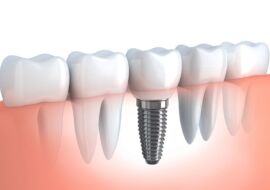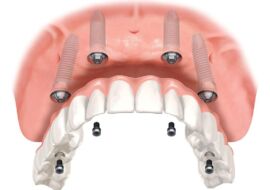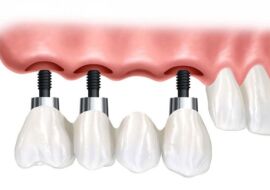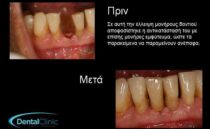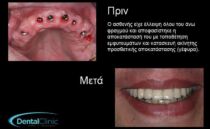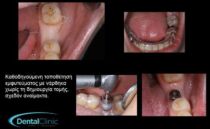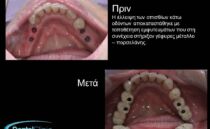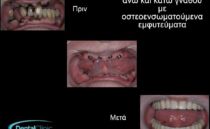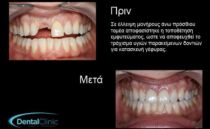Smile again, with confidence!

Dental implants are the discovery which has radically changed the course of dental science in the last 25 years. Modern implants are made of titanium, have a shape that is similar to the root of the tooth, are placed under the gums into the jawbone and on them adhere or are screwed various prosthetic restorations (artificial teeth).
The implants are placed into the bone with a relatively simple surgery for the experienced surgeon. The duration of the surgery is approximately half an hour for a single implant and increases depending on the number of implants. The operation is performed under local anesthesia and thus the patient feels no pain at all. After the operation, there is no significant pain, just a slight edema (swelling) in the area, which are symptoms that can be treated with simple painkillers.
After their placement, the implants are integrated into the bone, that is a direct contact is developed between the bone cells and the titanium surface without any intervention of soft connecting tissue. Thus, the implant is fully integrated into the bone and presents no mobility at all.
The osseointegration of implants, when the protocol for their placement is strictly followed, is achieved at a rate that approaches 100%. The survival of implants also presents high rates that exceed 90% after a period of ten years, while there is no “expiry” date for them. Implants can be placed on any healthy person, even in elderly people.
A prerequisite is a good pre-operative radiographic and clinical assessment of whether the bone is sufficient in quantity and quality at the places that the insertion of the implants is planned.
In the case that the bone is not sufficient for the placement of the implants, its volume can be increased with the use of bone grafts. This is the aim of operations such as the lift of the sinus floor or other operations that increase the width or the height of the alveolar crest.

Immovable restorations may regard the loss of one tooth, of more than one teeth or even the loss of all teeth.
An implant can be placed under certain conditions immediately after the extraction of a tooth or later, after the area of extraction is healed and new bone is generated, that is after three months or even more. The prosthetic reconstruction is usually performed after a period of 2-4 months, which is enough time so that the osseointegration of the implants is achieved.
Alternatively the immediate loading of implants (immediate placement of a temporary or even of the permanent prosthetic reconstruction) can be selected, if certain conditions are deemed to be met regarding the number of implants and their initial stability. A longer time period is required when bone grafts have been placed.
Prosthetic reconstructions are separated into mobile and immovable, depending on whether the patients can remove them by themselves from the oral cavity or not.
Mobile reconstructions regard cases of total tooth loss with the use of complete dentures, that rest on two or more implants.
Implants can literally change the lives of people who have lost their teeth, as they provide the possibility of stable reconstructions and put an end to complete dentures that move or even slide out of position while chewing or speaking.
Almost always, with the use of implants, one can avoid the drilling of healthy teeth for the fabrication of immovable prosthetic works (bridges).
The longevity and proper functioning of implants require the daily care of oral health -as in the case of teeth – and avoiding some harmful habits, such as smoking, for example.
The design and application of the treatment is performed in the most appropriate way. The placement of implants, at the DentalClinic, takes place with the use of computed tomography (CBCT) and with the guided implant placement system of Αnatomage. This ensures that no incisions and stitches are created, where this is applicable, reducing thus significantly the duration and discomfort of classic surgery, as well as the time of recovery.
The following photos illustrate indicatively some cases:


Guided implant surgery
Guided implant surgery is a process that involves the dentist utilizing advanced machinery and imaging technology in order to aid in the process of both manufacturing and placing dental implants in an efficient, precise, and effective way.
Advantages:
- Complete analysis and diagnosis of case
- Virtual, clinical, and surgical planning prior to surgery
- Simple surgical procedure
- Small amount of parts being inserted into and out of patient’s mouth
- No surgery cuts and stitches
